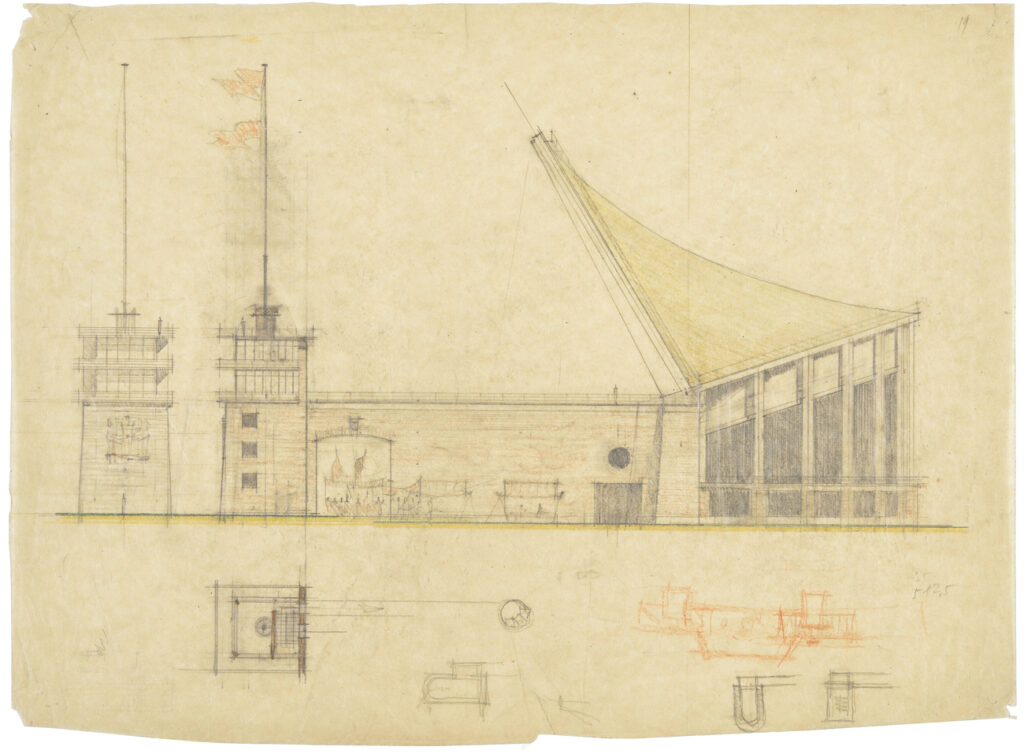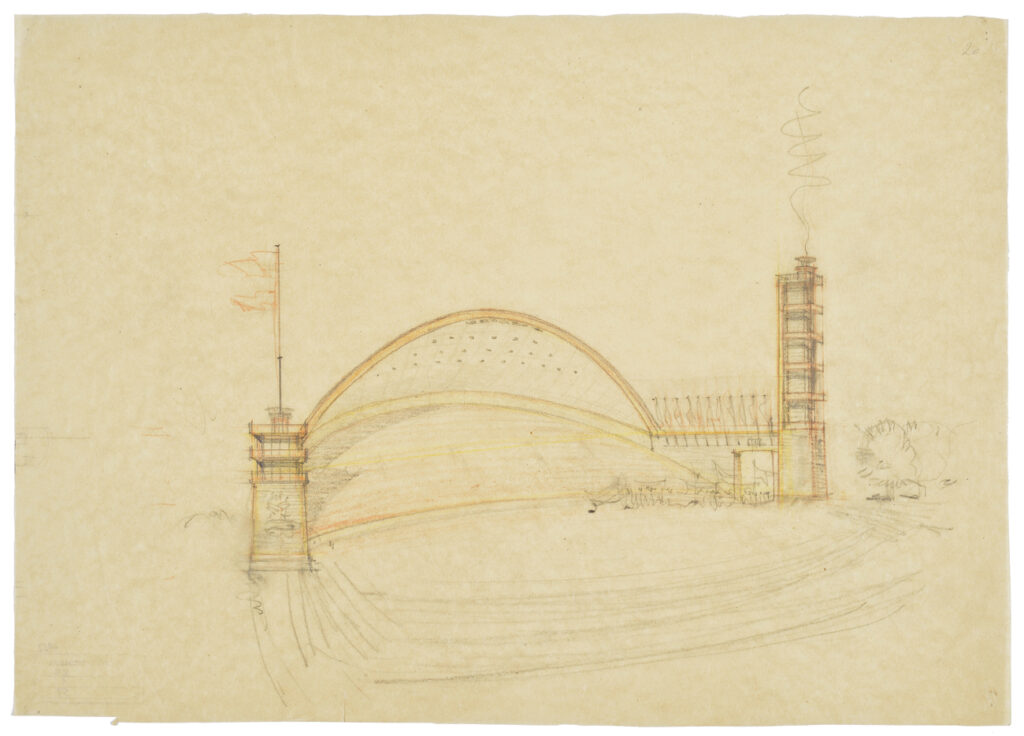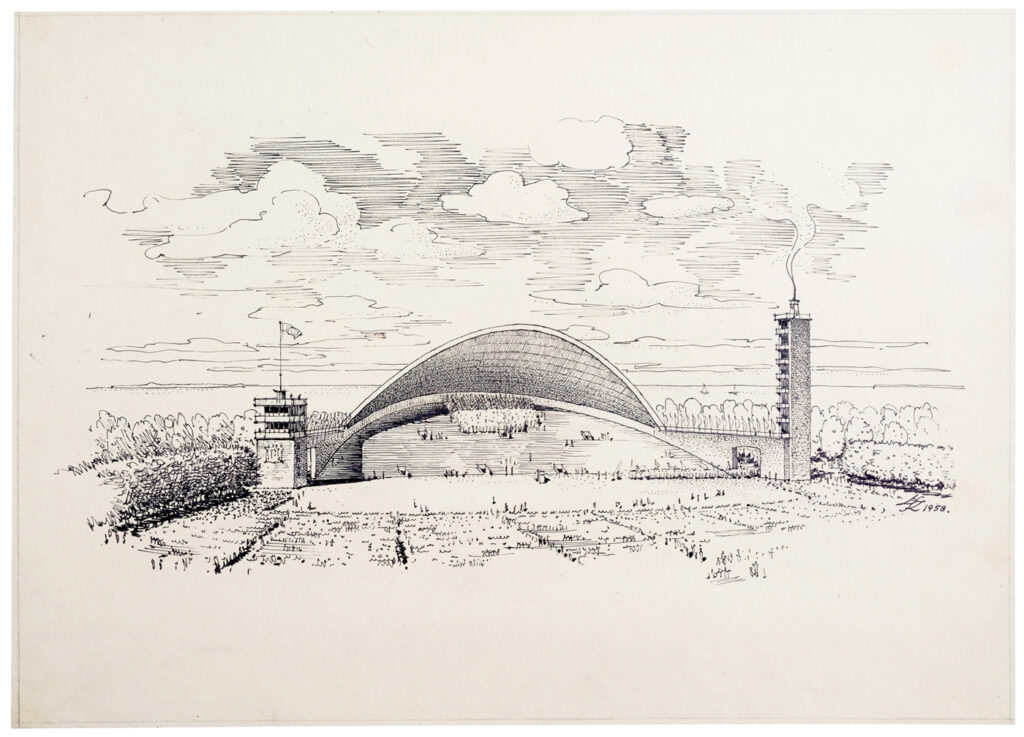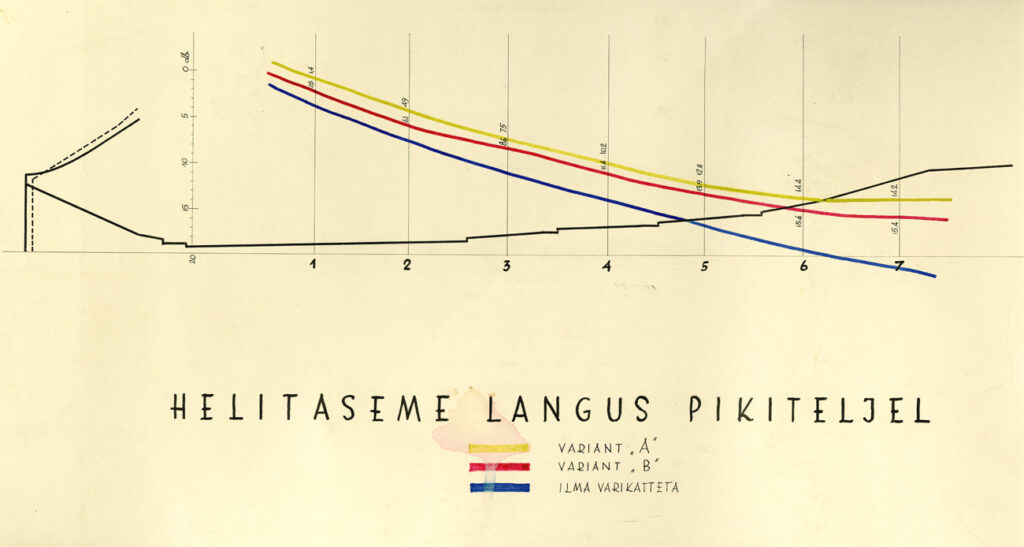-
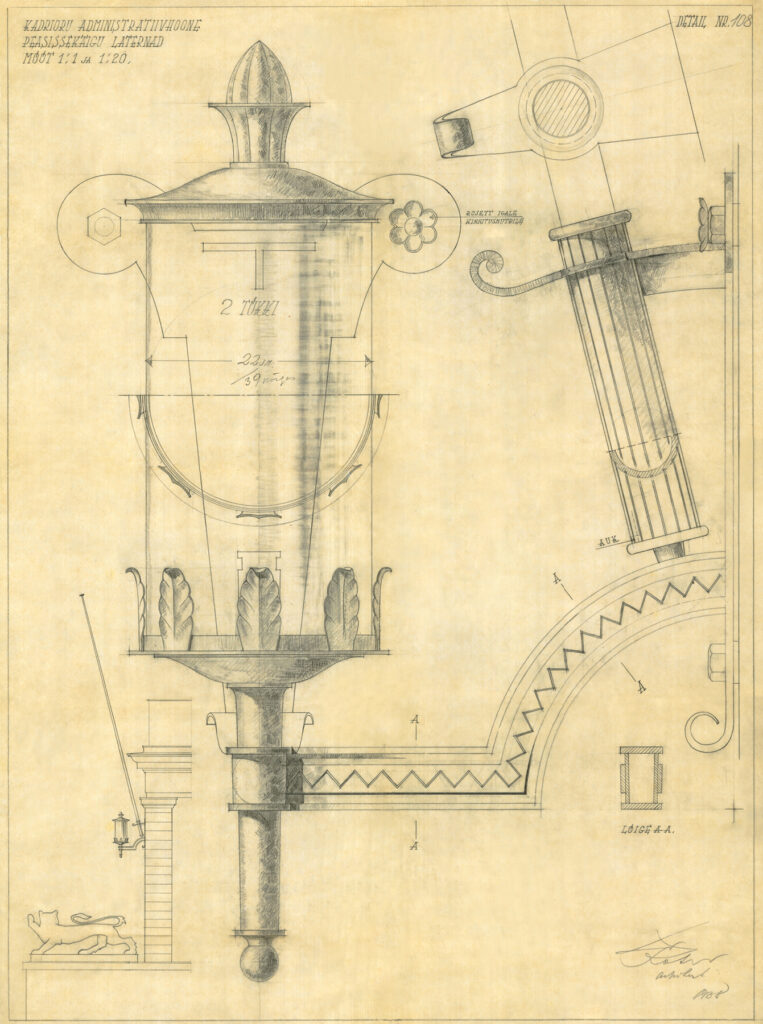
-
Lantern drawing of the President’s Office, Alar Kotli, 1938
Alar Kotli, 1938. EAM 2.9.2
Lantern drawing of the President’s Office
The main entrance of the President’s Office is flanked by lanterns featuring abundant rosettes and leaf motifs which comprise an integral whole with the Neo-Baroque architecture. Seeing as this is a representative building, there are sockets for flag poles above the lanterns. The drawing also depicts a familiar motif from the coat of arms of Estonia – a bronze leopard (by sculptor Voldemar Mellik) set to guard the doorway on both sides. This pencil drawing was part of the colletion given to the museum in 1993 via firm Eesti Ehitusmälestised. Text: Sandra Mälk
-
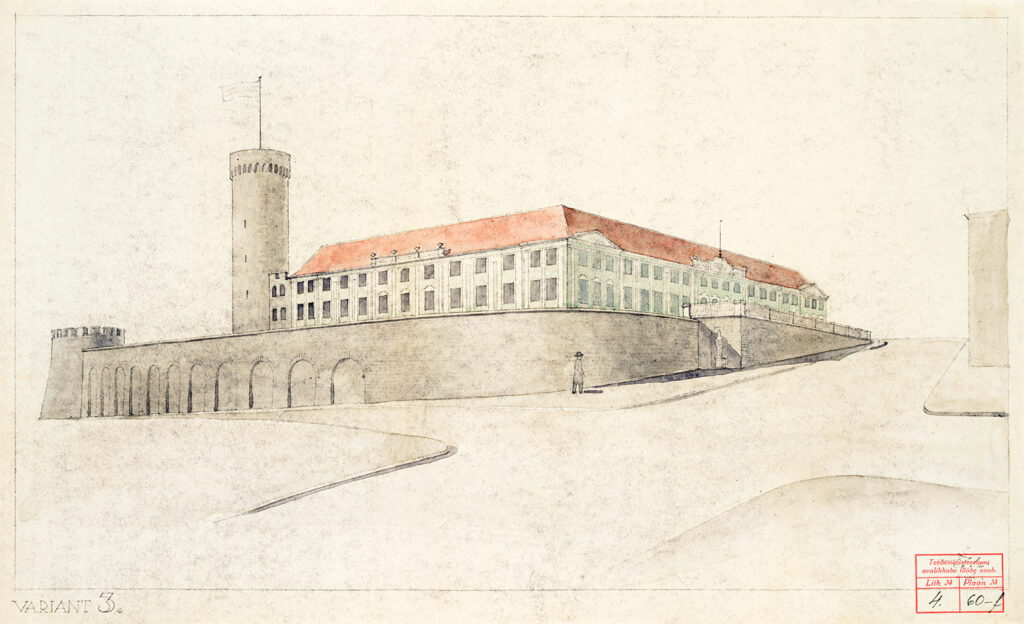
-
Version 3 of the reconstruction of Toompea Castle and Gardens. Alar Kotli
Alar Kotli, 1933–1936. EAM 2.11.15
Reconstruction of the Toompea Castle and the castle garden
The aspiration for representability that began in the second half of the 1930s made its way to architecture via state buildings, manifesting in the use of traditional forms and details. The Estonian government, which had centred around Toompea, reconstructed the southern wing of Toompea Castle and the Governor’s Garden in front of it, opting for a Neo-Baroque style that harmonised with the 18th-century Late Baroque look of the front of the castle. The supporting wall of the Governor’s Garden also received a fresh look. The Coloured copy in watercolour technique was added to the museum collection in 1991. Text: Sandra Mälk
Alar Kotli, 1957-1958. MEA 23.1.51
Tallinn Song Festival Arena (sketch)
The Tallinn Song Festival Arena represents the re-arrival of modernism to Estonia during the Khrushchev Thaw. The Estonian SSR leadership commissioned the structure to mark the 20th anniversary of Soviet rule, but to Estonians, it was a symbol of their nationality and culture. The Song Festival Arena was essentially also a way of the nation thumbing its nose at the USSR – with its completion, Estonians’ nearly 100-year tradition of holding mass song festivals was immortalised. Alar Kotli came close to an entirely innovative final solution already when making his initial sketches, which include a saddle-roof in the shape of a hyperbolic paraboloid that functions as an acoustic screen. The sketches were donated to the museum by Anu Kotli in 1997. Text: Sandra Mälk






